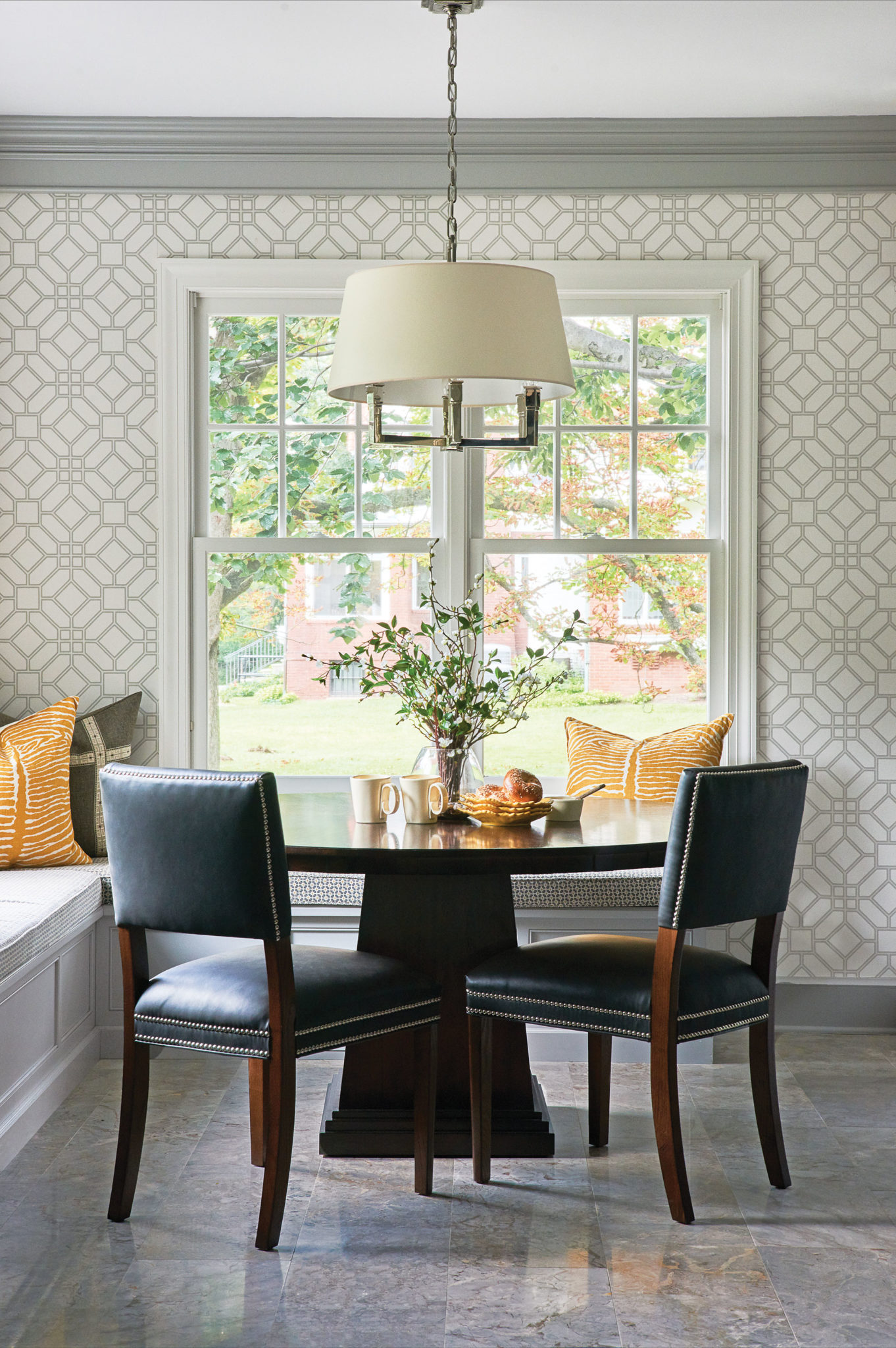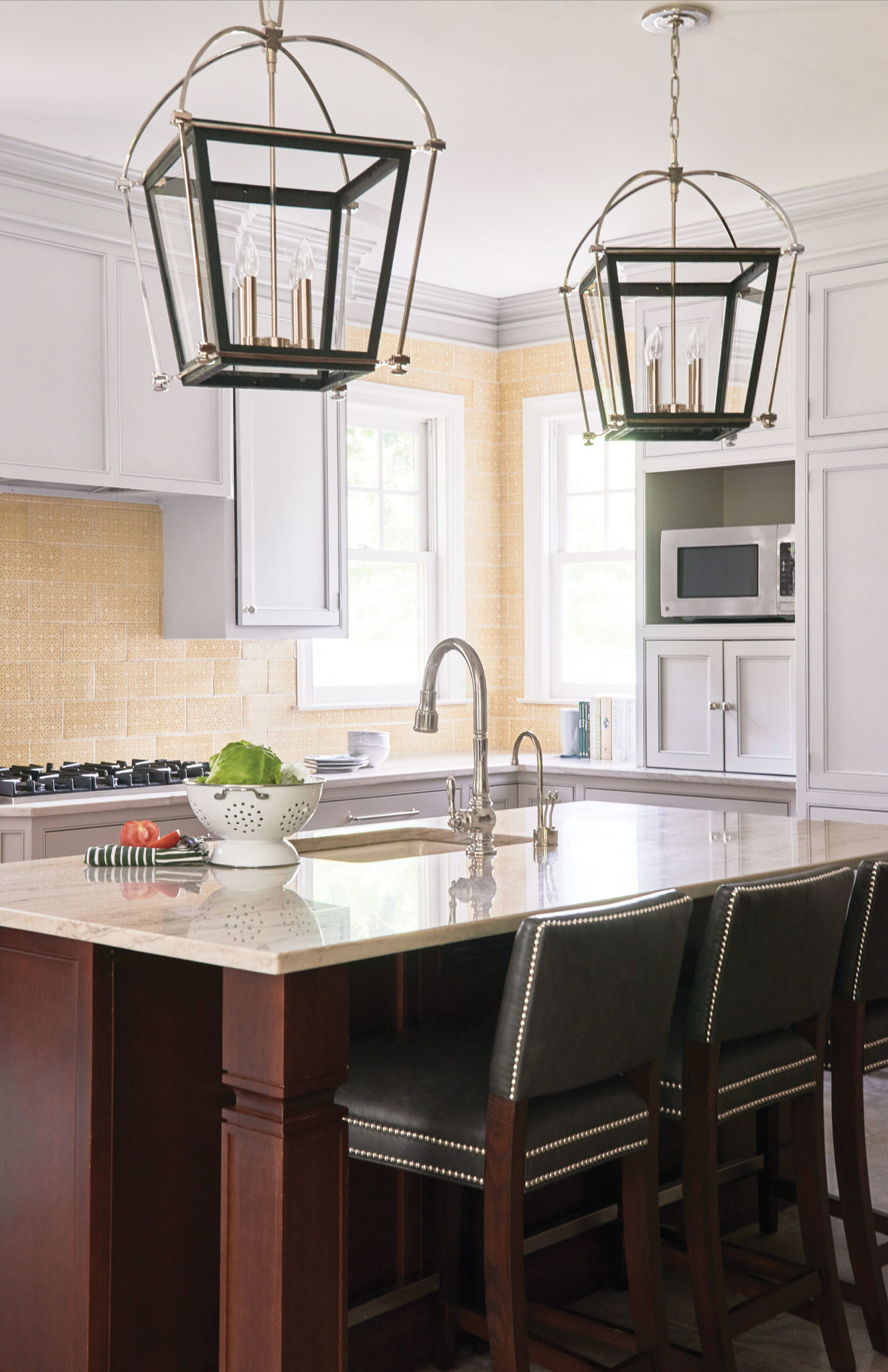Geometric Style Elevates this Glen Ridge Home
Writer Marirose Krall | Photographer Jane Beiles | Designer Diana Weinstein | Location Glen Ridge, NJ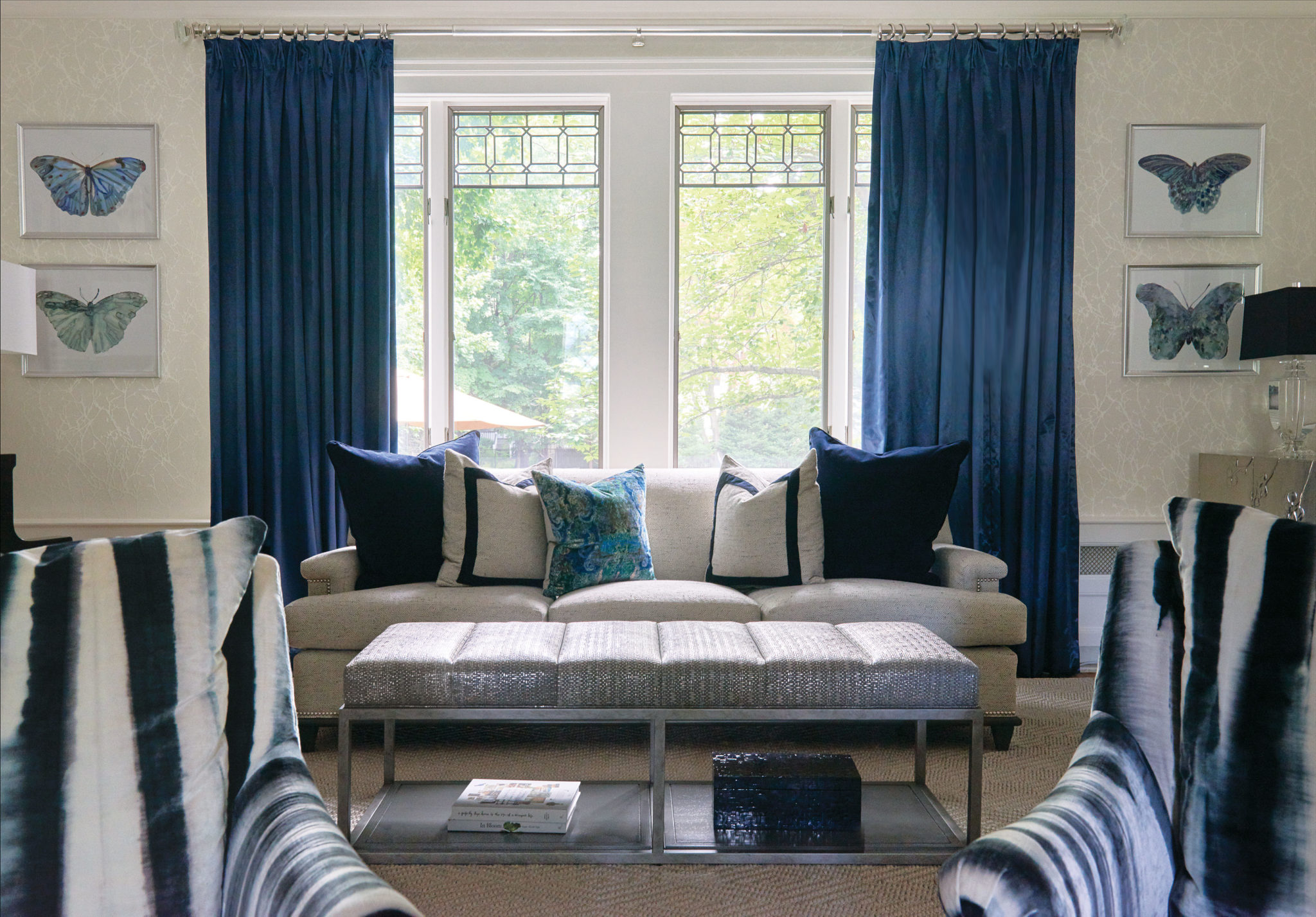
A cushioned ottoman in the living room can also function as a coffee table when the homeowners need a spot to sit a serving tray or play a game.
Geometric style takes a Glen Ridge home to a higher plane
Nicole and Michael Quinn decided it was time to update the interior of their 1907 colonial-style home in Glen Ridge, New Jersey. “It’s a beautiful, gracious house, and they wanted to elevate the décor,” designer Diana Weinstein says. Still, the Quinns wanted their home to be practical. “They have three kids and a big dog and people in the house all the time. They wanted it to be sophisticated, but livable and obtainable,” says Weinstein, owner of Diana Weinstein Design, also in Glen Ridge.
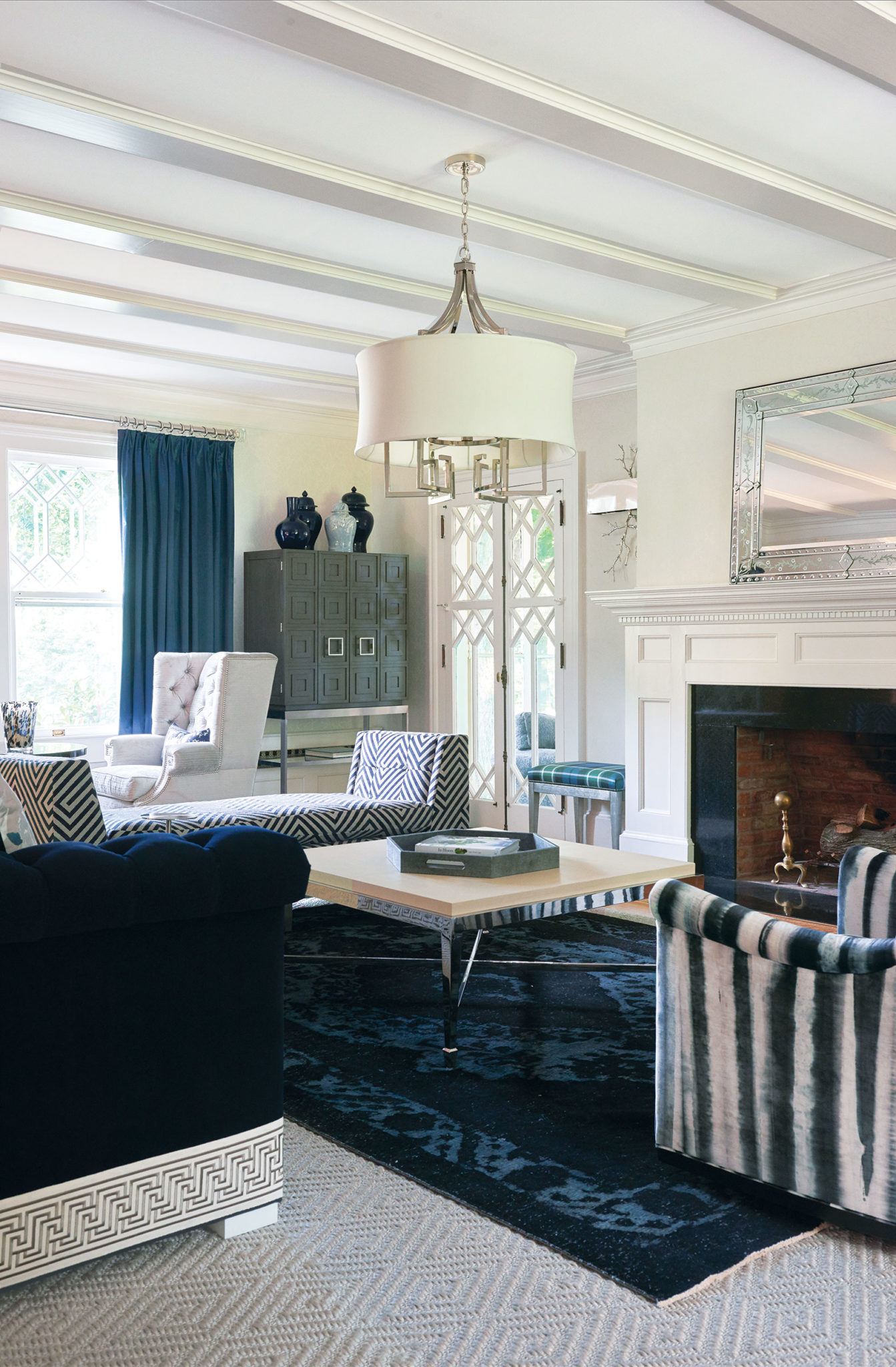
In the living room, designer Diana Weinstein incorporated several conversation areas. The blue black top rug is an antique.
Weinstein took her cues from the bones of the house. “I tried to reiterate the geometry and the architecture in the design elements,” she says. The geometry is nowhere more apparent than in the dining room, where the windows feature lattices that are original to the house. The designer chose decorative elements to reinforce the motif of the fretwork. “The chandelier reiterates the geometric lines,” Weinstein says of the striking fixture, which combines straight lines and soft curves to dazzling effect in a color that coordinates with the painted millwork. A diamond pattern on the backs of the side chairs brings together an assortment of hues found elsewhere in the room.
Weinstein incorporated the geometric motif “over and over again in a very subtle way.” Wallpaper in the eating nook offers another iteration of the dining room latticework, with similar shapes in a similar color. The theme recurs — this time in a miniature, golden version—in the kitchen backsplash tile. Window lattices make another appearance in the living room, where a chandelier featuring its own angular shapes underscores the look, its circular shade creating a juxtaposition of curves and angles to soften the look.
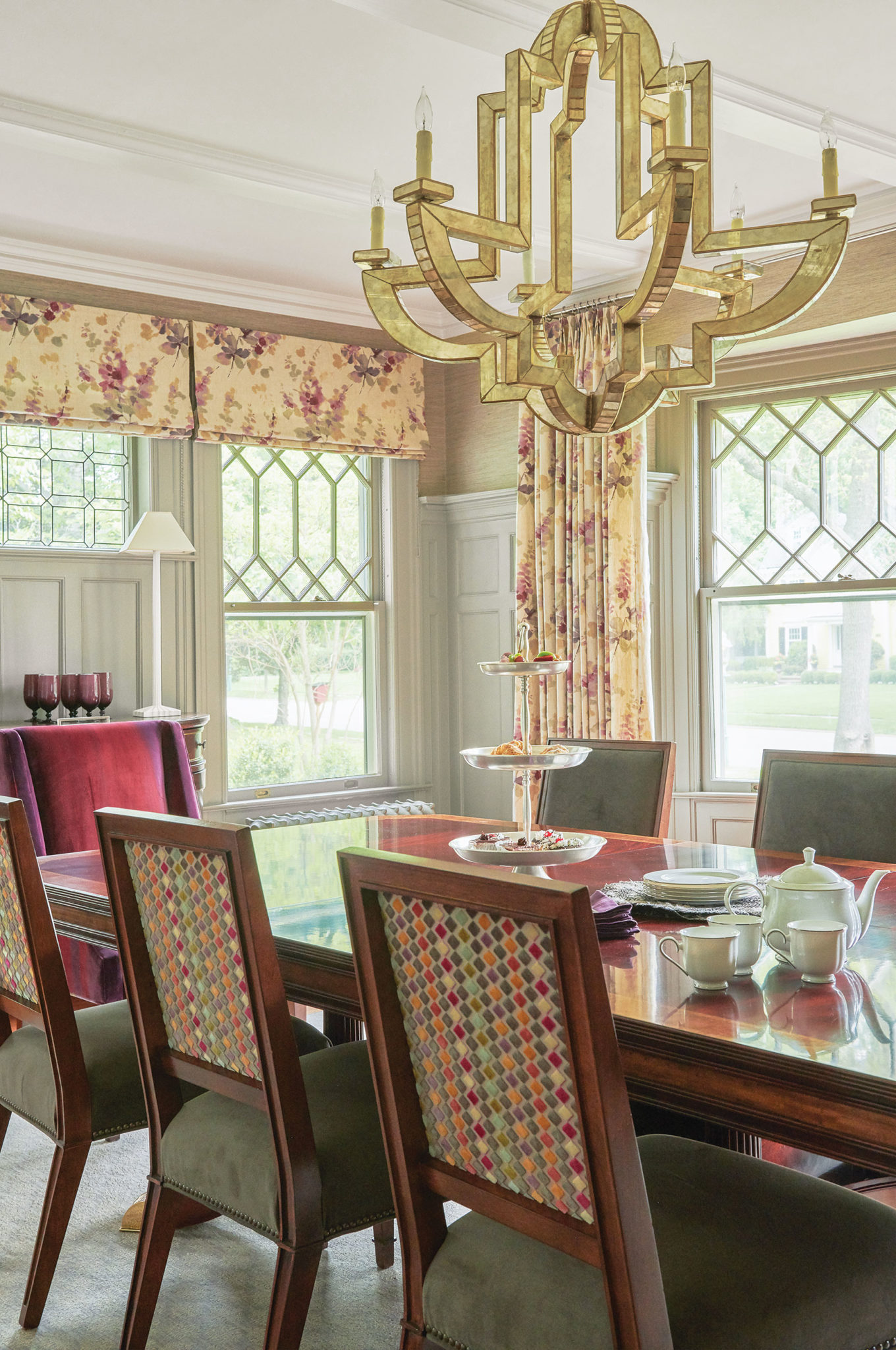
Original fretwork on the windows sets the tone for the décor in the dining room.
Also softening the look are references to nature interspersed throughout the home. Elements such as floral window treatments in the dining room, butterfly prints in the living room and a centerpiece of branches in the eating nook help to create a more relaxed look, Weinstein says, “so it’s not just hard geometric shapes, which can sometimes feel really cold and modern.”
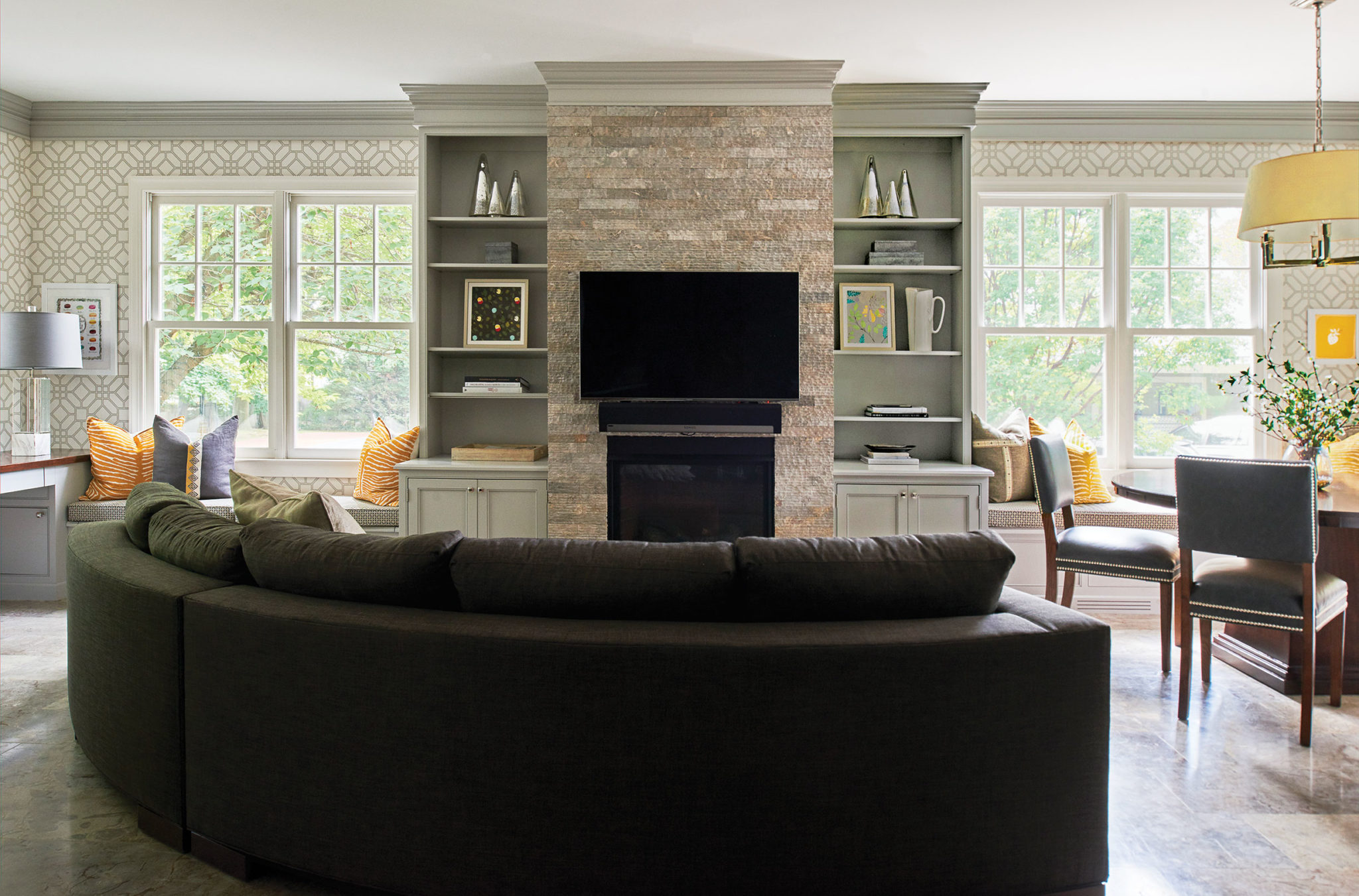
A curved sofa takes center stage in the family room. “I didn’t want hard-backed lines because we have so much geometry in the room,” designer Diana Weinstein explains. The sofa also helps to define the boundaries between the family room and the kitchen.
In addition, thoughtful furniture placement contributes to a welcoming vibe. A curved sofa in the family room helps define the boundaries between that room and the kitchen and acts as a cue for visitors “to make the flow meander a little bit but still be directive,” the designer says.
The living room, a “long, tricky space,” Weinstein notes, required careful planning. She used furniture placement to transform the room into a space conducive to relaxation and conversation. Wingback chairs, a daybed, two sofas, an ottoman and striped swivel chairs are placed for optimum interaction.
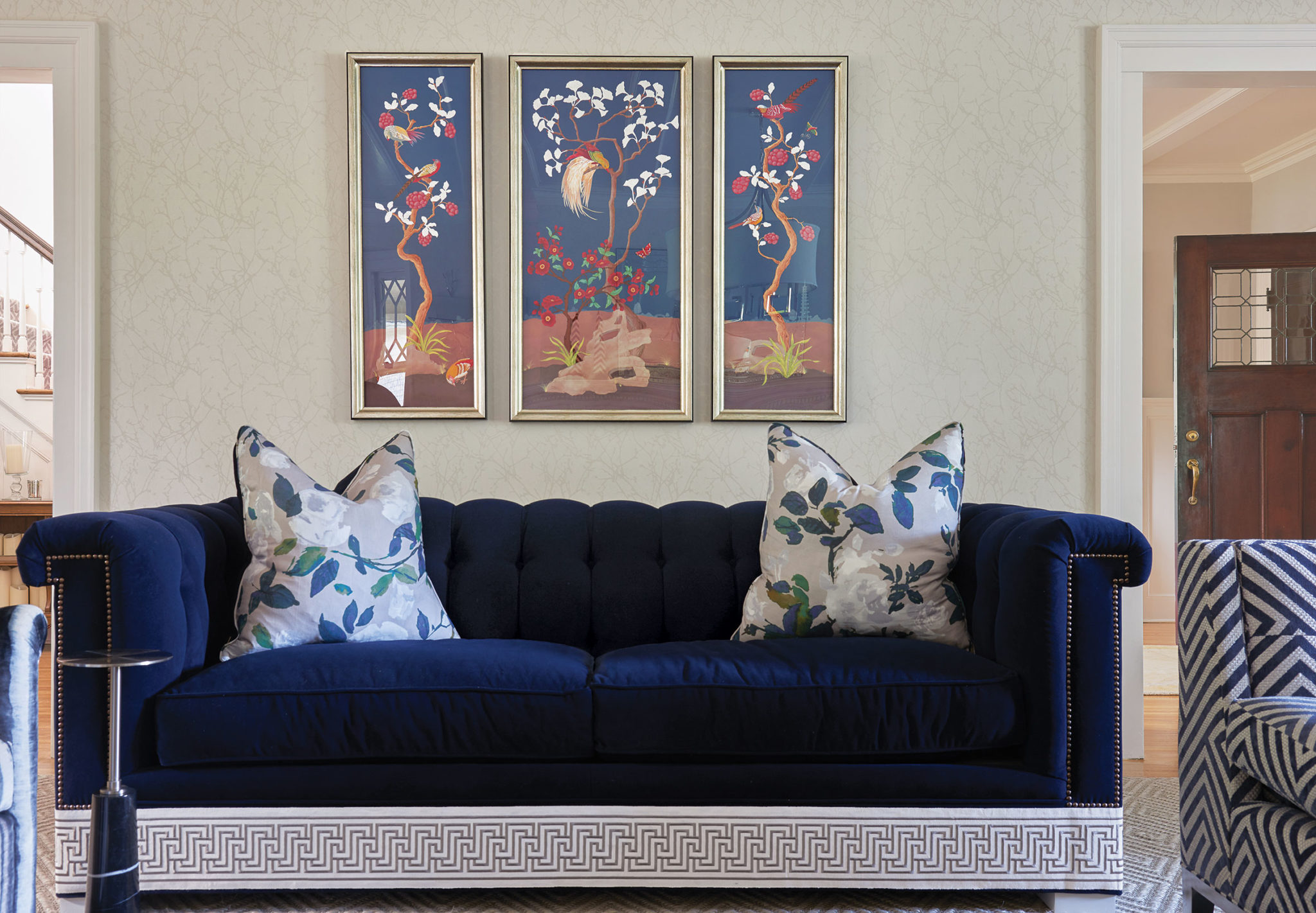
Greek-key patterned trim—another geometric touch—is a striking touch on a living room sofa.
“It’s like making a big room into intimate zones,” Weinstein says, “but all those zones can meld into each other.” Weinstein topped off the space with upholstered benches on both sides of the fireplace for additional seating.
The designer has successfully reinterpreted the décor in these vintage spaces for the 21st century, updating the style while honoring the home’s architectural roots. “The functionality makes these old rooms work for modern families,” she says. “All those original architectural details are so amazing; the décor brings them out.”

